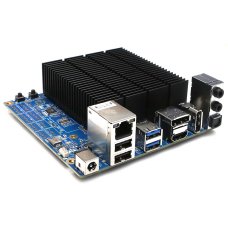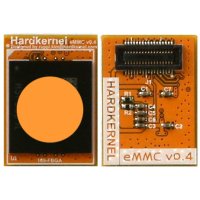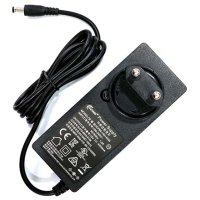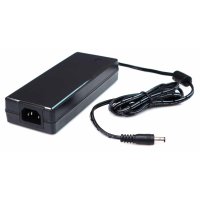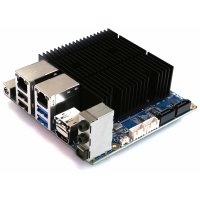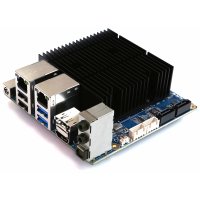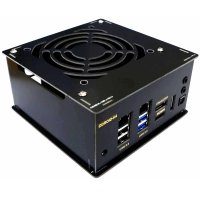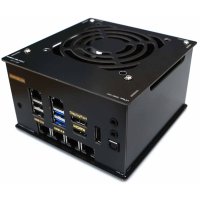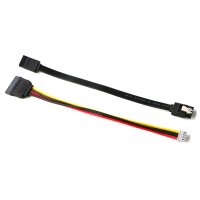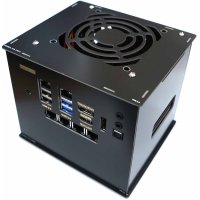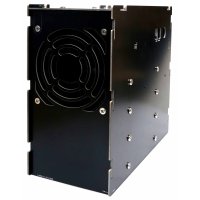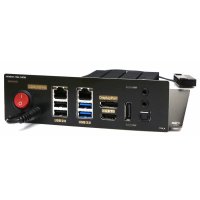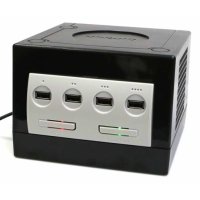The ODROID H-series is growing with three brand new models.
- Again, the new generation is more powerful and offers higher performance.
- It also delivers key new IO that will please many users.
Introducing the ODROID-H4, H4+ and H4 Ultra
Hardkernel is introducing the ODROID-H4, H4+ and H4 Ultra, which is equipped with higher performance and richer interfaces.
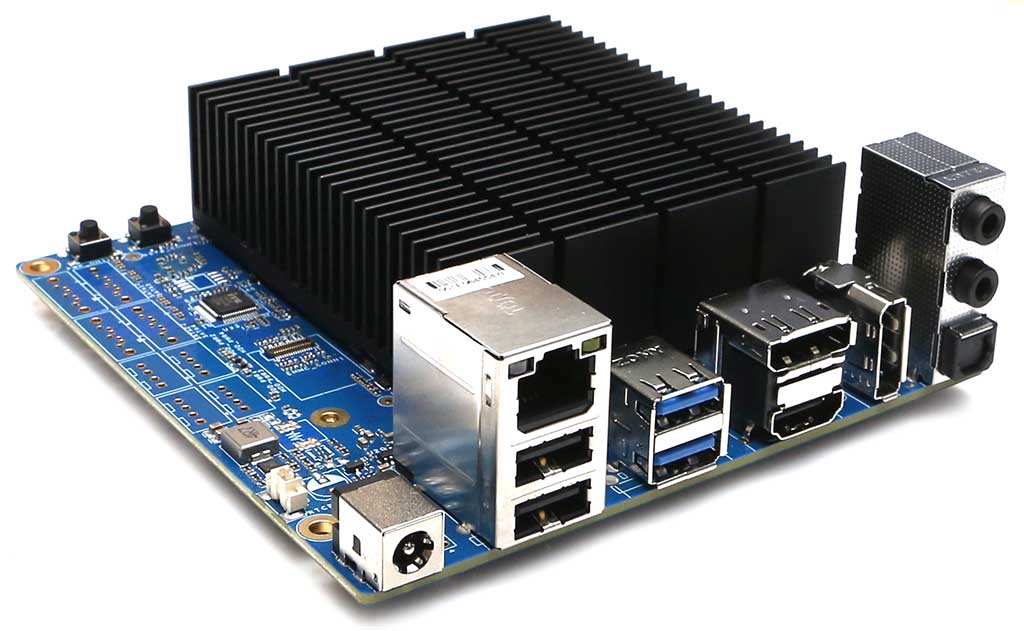


The major characteristics of the ODROID-H4 series compared to the ODROID-H3 series are:
- Faster CPU architecture Alder Lake N vs. Jasper Lake. Plus AVX2 extensions.
- Faster DRAM interface DDR5 4800 MT/s vs. DDR4 2933 MT/s.
- Higher base and boost CPU frequencies and more powerful iGPU.
- The increase from 2 to 4 SATA ports allows connection to a greater number of storage devices, ODROID-H4+ and ODROID H4 Ultra only.
- An additional DisplayPort added allows the simultaneous use of up to 3 monitors.
- Low cost ODROID H4 for compute and graphics applications (e.g signage, robot, factory automation,..)
- Flagship H4 Ultra doubling the number of CPU cores, from 4 to 8 cores.
We also implemented little details following the ODROID-H3 feedback we receive from all of our users, this means you. Examples:
- Dual BIOS: If the BIOS is corrupted due to a power outage during update, etc., you can boot into the backup BIOS and recover by moving the jumper next to the DC jack. This feature is only available on ODROID-H4+ and ODROID H4-Ultra.
- The new H4 cases format has been improved so that a cooling fan can be mounted inside the case.
- A Mini-ITX kit for seamless integration with generic ITX PC cases.
The ODROID H4 series doubles down on versatility by adding the low cost H4, with stripped down hardware, on one side of the H4+, and the 8-core H4 Ultra flagship on the other side of the H4+.
The table shown below details the H4 series user-level customizations:
Design An SBC design that makes sense: all the connectivity is on the rear side, simplifying case design and reducing footprint on a desk.
H-series Net Card Using the NVMe port, provides 4 additional 2.5 GbE ports, thus tripling the number of 2.5 GbE ports to 6 ports.
The ODROID H-series offers you a lot of freedom. You are free to chose:
1. The amount and brand of memory. No soldered memory.
2. The size of the eMMC (including not using one). No soldered eMMC.
3. The size of the NVMe PCIe Gen 3 x4 SSD, including not using one(*).
4. To transform the NVMe slot into a PCIe Gen 3 x4 slot for using PCIe cards via optional adapter cable
5. The size of the 1 to 4 SATA III hard disks or SSDs, including not using them (H4+ and H4 Ultra only).
Do It Yourself
6. A case among 4 (soon to be 5) types of Hard Kernel cases or use a custom one you design or another user designed or use a mainstream Mini-ITX case thanks to the ODROID H4 Mini-ITX kit.
7. Hard Kernel cases allow the usage of an optional silent fan for optimal thermal performance.
8. Any x86-64 flavor of Windows, Linux or BSD operating systems, etc.
9. To upgrade the hardware later with larger memory, more NVMe or SSD or hard disk space.
10. To maximize performance or to minimize power consumption thanks to well documented BIOS and OS options.
PCIe Gen 2 on the H2/H2+.
Comparing the H4, H4+, H4 Ultra to H3+
In order to evaluate the performance of the H4, H4+ and H4 Ultra and compare them to their predecessor, we elected to compare them only to the H3+ and H3+ UP, the fastest of the previous H-series generations.
As a reminder, you can retrieve the comparison of the H3 and H3+ vs. the H2+ there:
With the PDF version available there:
What is the meaning of UP?
The acronym UP indicates that the CPU is running in “Unlimited Performance Mode”. This is a mode where the CPU can run in Turbo Boost mode with no time limit, hence the name. The Unlimited Performance Mode is described in the next section.
As we are going to see, the Alder Lake N97 tops the Jasper Lake and the Alder Lake N305 is in a class of its own when compared to the Jasper Lake and ADL N97, especially in UP mode.
We proceeded with real application benchmarks rather than synthetic ones. To do so we ran a battery of Phoronix testing suites. These testing suites are listed below:
- Compilation (subset)
- Compression
- Java (subset)
- Python
- Imaging
- Audio Encoding
- Databases
- Unigine GPU
- Cryptography
- Video Encoding
The Phoronix Testing Suite is available there: https://www.phoronix-test-suite.com/. As stated on its web site, we quote:
Compilation Benchmark
- Benchmark description: https://openbenchmarking.org/suite/pts/compilation
Compression Benchmark
- Benchmark description: https://openbenchmarking.org/suite/pts/compression
Java Benchmark
- Benchmark description: https://openbenchmarking.org/suite/pts/java
Python Benchmark
- Benchmark description: https://openbenchmarking.org/suite/pts/python
Imaging Benchmark
- Benchmark description: https://openbenchmarking.org/suite/pts/imaging
Audio Encoding Benchmark
- Benchmark description: https://openbenchmarking.org/suite/pts/audio-encoding
Databases Benchmark
- Benchmark description: https://openbenchmarking.org/suite/pts/database
Unigine GPU Benchmark
- Benchmark description: https://openbenchmarking.org/suite/pts/unigine
Cryptography Benchmark
- Benchmark description: https://openbenchmarking.org/suite/pts/cryptography
Video Encoding Benchmark
- Benchmark description: https://openbenchmarking.org/suite/pts/video-encoding
Summary
Note: This summary compares the UP versions of the H3+, H4, H4+ and H4 Ultra because we did not run all the benchmarks on the H3+ non-UP. We ran a total number of 206 benchmarks/cases using the UP configurations.
The major facts about these benchmarks are:
- The H4 and H4+ UP are on average around 36% more performant than the H3+ UP.
- With the H4 Ultra UP, the average climbs to around 83%!
- The H4 and H4+ UP can be up to twice faster than the H3+ UP for particular tests.
- The H4 Ultra UP can be up to three and a half faster than the H3+ UP for particular tests.
- The H4 Ultra UP is on average around 36% more performant than the H4 and H4+ UP.
- The H4 Ultra UP can be more than twice faster than the H4 and H4+ UP for particular tests.
Not too surprising, with 8 cores vs. 4 cores, the H4 Ultra UP top performance occurs with multi-threaded applications
(e.g. Compilation, Java, Imaging, Stargate, MemCached, OpenSSL, Video Encoding,…) without being kneecapped by thermal throttling, thanks to Unlimited Performance and active cooling.
Benchmarks Configuration
- ODROID-H3+: Ubuntu 22.04.3 (Gnome), 32 GB memory DDR4 2933 MT/s, NVMe PCIe Gen 3.
- ODROID-H4: Ubuntu 22.04.4 (Gnome), 16 GB memory DDR5 4800 MT/s, NVMe PCIe Gen 3.
- ODROID-H4+: Ubuntu 22.04.4 (Gnome), 32 GB memory DDR5 4800 MT/s, NVMe PCIe Gen 3.
- ODROID-H4 Ultra: Ubuntu 22.04.4 (Gnome), 48 GB memory DDR5 4800 MT/s, NVMe PCIe Gen 3.
Unlimited Performance Mode
Starting with the Core 10th generation Intel introduced Power Limit 4 (PL4) and made it user configurable via the BIOS. What is it? PL4 is the SoC’s maximum power limit at the package level. No matter what the CPU is actually doing, it will not pass this limit. The interesting side of the story is that as a user you can set it to 0, which means no limit.
Fortunately, Intel carried it with the Alder Lake-N processors.
The ODROID-H4, H4+ and H4 Ultra BIOS allows you to set this limit to 0. This is what we call Unlimited Performance mode. The default value is 30,000 corresponding to the Balanced mode, meaning around a SoC’s maximum power limit of 12W for the N97 of the ODROID H4 and H4+, and 15W for the N305 of the H4 Ultra.
Using the Unlimited Performance mode (annotated UP) with the ODROID-H4, H4+ and H4 Ultra enables the CPU to turbo boost indefinitely: 2.9 GHz all cores and 3.6 GHz one core for the H4 and H4+ , 3.0 GHz all cores and 3.8 GHz one core for the H4 Ultra.
As you may expect the CPU will get hot quickly (in a matter of minutes) and get close to his T Junction (Tj) temperature which will trigger its emergency shutdown as thermal protection. But the CPU will not reach Tj because it will automatically throttle down when it is about 5 degrees Celsius away from Tj (we tested this multiple times). As soon as the CPU thermally throttles down you start losing the increased performance you were aiming at while still consuming more power compared to the Balanced mode. Not ideal.
In order to prevent thermal throttling when using the Unlimited Performance mode, the solution is simple:
active cooling with a fan.
We designed the H4, H4+ and H4 Ultra heat sink to make it very efficient:
(a) you do not need a fan in Balanced mode
(b) it has a high rate of thermal exchange when coupled with a fan.
- Using a fan will decrease the maximal CPU temperature by about 25 to 30 degrees Celsius depending on factors such as the ambient temperature. It it difficult for us to give you precise temperature values because what one witnesses depends on many factors: as already mentioned the ambient temperature, the CPU BGA soldering thickness error, the heat sink assembly tolerance, the type of thermal paste and quantity applied, the cooling fan speed RPM error margin (which can be as high as 5 to 10%). All of these factors can result in a 10+ degrees Celsius difference between one setting and another.
- The important point is that with active cooling you get the increased performance you aim at while the CPU stays just comfortably warm while turbo boosting indefinitely, way below temperatures close to Tj. In other words the fan active cooling brings you the best of both worlds. This is what we witnessed and validated while performing many tests in different locations.
Last point: in Unlimited Performance mode, the CPU (and the fan) use more power than they do in Balanced mode, easily reaching 23+ W with the ODROID-H4+ and 34+ W with the ODROID-H4 Ultra. However this happens only when the CPU is indeed turbo boosting. When idle, the system will use the same power as in Balanced mode. If your goal is to minimize energy consumption, use Balanced mode. If your goal is to maximize performance use Unlimited Performance mode and again use active cooling with a fan to avoid the CPU to be constantly throttling down.
For learning how to change PL4 in the BIOS, as well as change the fan settings, please refer to the related Wiki page.
The official 92x15mm and 92x25mm 12V PWM cooling fans or similar 3rd party cooling fan should be mounted under the official cases venting holes. We have tested the following 3rd party cooling fan samples.
– Noctua NF-A19x14 PWM ( Thickness 14mm)
– Thermalright TL-9015 ( Thickness 15mm)
Unlike the previous H2 and H3 cases, the new H4 cases have been designed to allow the installation of the thin 92x15mm cooling fan inside the case. The H4 case types 1, 2 and 3 require the use of a 92x max 15mm thin fan if you want to place the fan inside the case. As the distance between the cooling fan and the heat sink is closer, we can expect a cooling effect that is not significantly different when using a thin fan.
On the other hand, the H4 case type 4 accepts both 92×15 and 25mm fans. The 92x25mm fan is recommended for the H4 case type 4. It provides higher flow and pressure than the 92x15mm fan. This allows for the air to circulate better inside the case, cooling both the CPU heat sink and the disk(s).
The ODROID-H4, H4+ and H4 Ultra use a PC standard 12V PWM 4-pin connector (see diagram shown below). Therefore, anyone can install a third-party cooling fan that can be easily purchased in the market.

Demo video
This demo video shows the PS2 and GameCube emulation games on Linux Vulkan GPU driver with Fractional-Scaling technology. We used Batocera.linux x86_64 version 39 for the emulation.
Thanks to the H4’s significantly improved CPU, GPU, and DRAM performance, we can enjoy SD-quality classic masterpiece games in HD quality graphics now. To play games with this level of graphics on the H3 board, we had to connect an external video card.
Triple-Head 4K Monitor Demo
We can connect three 4K/60Hz monitors to the H4 for both fun and productive work. Thanks to hardware virtualization, Linux and Windows can be operated at the same time.
Specifications:
Processor Intel 4-Core N97 for ODROID-H4 and H4+
Intel 8-Core i3 N305 for ODROID-H4 Ultra
Memory 1 x DDR5 SO-DIMM slots
Single Channel, up to 4800 MT/s. Note: Dual rank r2x8 are better.
Max memory capacity 48GB
DDR3/DDR4 are not supported
Storage 1 x eMMC connector (bootable and selectable on BIOS)
Various eMMC modules can be purchased at Hardkernel store
4 x SATA3 6Gbps
1 x M.2 slot (PCIe 3.0 x 4, supports NGFF-2280 cards)
Networking 2 x 2.5 GbE LAN ports (RJ45, supports 10/100/1000/2500 Mbps)
Intel I226-V
Supports Wake-On-Lan
LED indicators (Green: Link, Amber: Traffic)
Video 2 x DisplayPort 1.2 (up to 4K@60Hz)
1 x HDMI 2.0 (up to 4K@60Hz)
Triple simultaneous display support
Audio 1 x Audio out (3.5mm jack)
1 x Audio in (3.5mm jack)
1 x SPDIF out (ALC662, HDA codec)
HDMI & DP have audio output too.
External I/O 2 x USB 3.0 Host ports
2 x USB 2.0 Host ports
1 x Peripheral Expansion Header (24-pin, 2.54mm pitch)
– 1 x DC 5V, 1 x DC 3.3V, 5 x GND
– 1 x UART (TXD/RXD/RTS/CTS 3.3Volt IO)
– 2 x I2C (SCL/SDA 3.3Volt IO)
– 1 x External Power Button
– HDMI CEC, 5VA+, D+,D- ( To use the HDMI-CEC function, an additional external adapter board must be installed )
– 3 x USB 2.0
Other features Passive Heatsink
Dual BIOS on H4+ and H4 Ultra
BIOS Backup Battery
– Maintains system time and BIOS settings
Power Button
Reset Button
System LEDS Indicators:
– Red (PWR) – Solid light when DC power is supplied
– Blue (left, SLEEP) – turns off only when the system enters into suspend mode
– Blue (right, PMIC) – turns on only when the major power rails are working
– Amber (SATA) – Flashes when SATA data transfers
– Green (NVMe) – Flashes when NVMe data transfers
Active Cooling Fan Connector (12V 4-pin, PWM input + TACHO output)
Active Cooling Fan is optional
Connector (4-pin, 2.54mm pitch)
Power DC jack : outer (ground) diameter 5.5mm, inner(positive) diameter 2.1mm
DC 14V ~ 20V
— DC 15V/4A power adapter is recommended if you don’t use 3.5″ HDDs
— DC 19V/7A power adapter is recommended if you use more than one 3.5″ SATA HDDs together
Power consumption:
— Headless Idle : 2.0 ~ 2.9 Watt
— Desktop GUI Idle : 4.6 ~ 6.2 Watt
— CPU + GPU stress test : 19 ~ 22 Watt
— Power-off : 0.2 Watt
— Suspend to RAM : 0.9 ~ 1.2 Watt
Form Factor 120mm x 120mm x 47mm Approx.
Hardware Details:
Board Description

- A. CPU (Intel N97 or N305 )
- B. 1 x DDR5 SO-DIMM slots (Single channel memory support)
- C. 1 x M.2 PCI Express Module Socket (NGFF-2280)
- D. 1 x eMMC (Embedded Multimedia-Card) Socket
- E. 4 x SATA Power Connectors (2.5mm pitch, JST-XH compatible connector)
- F. 4 x SATA3 6.0 Gb/s Data Connectors
- G. 1 x DC Power Jack
- H. 2 x USB 3.0
- I. 2 x USB 2.0
- J. 1 x HDMI 2.0
- K. 2 x DisplayPort 1.2
- L. 2 x RJ45 Ethernet Ports (10/100/1000/2500)
- M. 5 x System LED Indicators
- N. 1 x Peripheral Expansion Header (24-pin)
- O. 1 x Power Switch
- P. 1 x Reset Switch
- Q. 1 x Backup Battery Connector (2-pin)
- R. 1 x Active Cooling Fan Connector (4-pin)
- S. 1 x Audio out, 1 x Audio in, 1 x SPDIF out
Block diagram

For the distinction between ODROID-H4, H4+, and H4-Ultra refer to the figure below
Have written H4, H4PLUS, and H4-ULTRA like in the red circle below pictures where on the bottom PCB inside SODIMM DDR5 Socket.
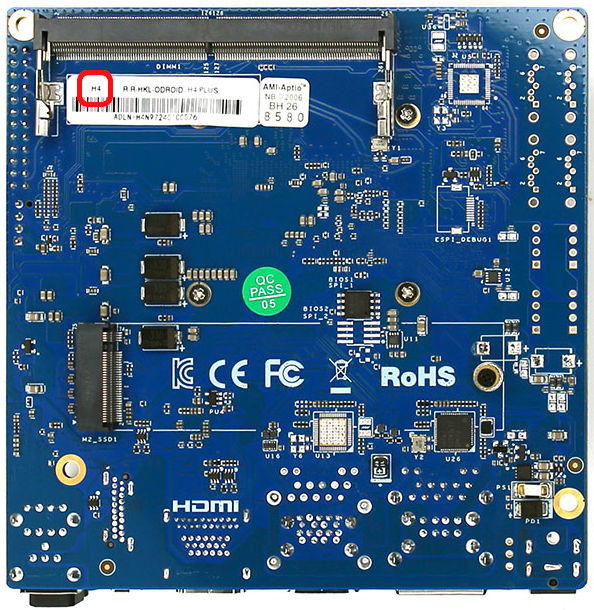
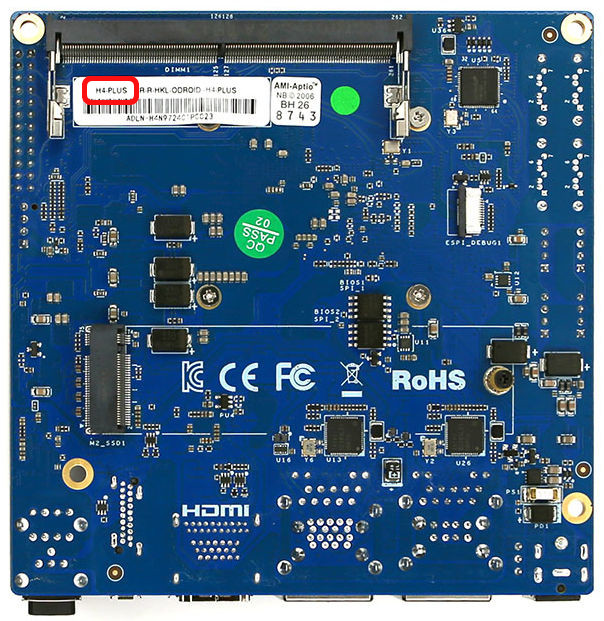
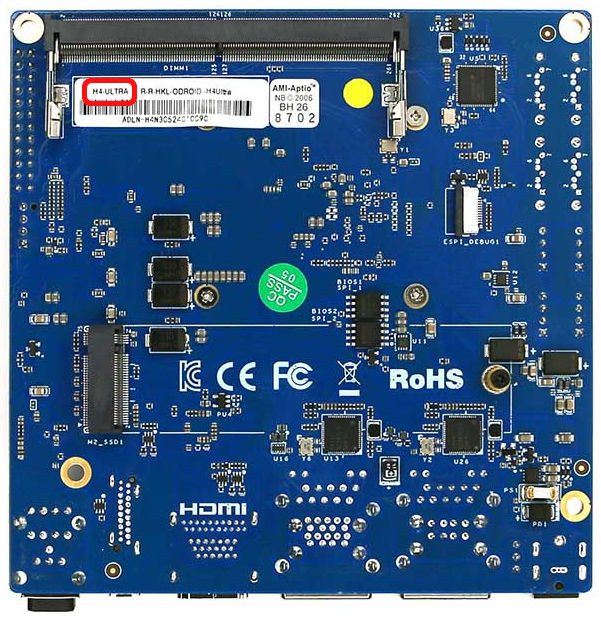
H4 H4+ H4-ULTRA
Note:
The supplier of the product has no replacement and/or refund policy as part of their product warranty/guarantee. Furthermore, the repair cost and the cost of shipping to and fro from South Korea has to be borne. As Fab.to.Lab is merely an intermediary we extend the exact same warranty terms to all customers of Harkernel.
Please find more details here: Supplier warranty terms and conditions: https://www.hardkernel.com/agreement/
Documentation:
Package Includes:
- 1 x ODROID-H4, H4+ and H4 Ultra
ODROID-H4, H4+ and H4 Ultra
- Brand: Hardkernel
- Product Code: Hdk-ODROID-H4-Plus-Ultra
- Reward Points: 134
- Availability: In Stock
-
रo 13,018.00
- Price in reward points: 13449
-
- 2 or more रo 12,911.00
- 3 or more रo 12,857.00
- 5 or more रo 12,803.00
- 10 or more रo 12,695.00
Available Options
Related Products
eMMC Module for H-series
8GB / 32GB / 64GB (eMMc Module)16GB eMMC module uses both eMMC 5.1 chipset and the Phison eMMC chips..
रo 1,302.00
Power Adapter 15V/4A
For ODROID-H2, ODROID-H2plus, ODROID-H3, ODROID-H3plus, ODROID-HC4, ODROID-HC4-P, ODROID-M1AC 100~24..
रo 1,433.00
19V/7A Power Supply
3pin AC power cord is not included. You need a generic PC power supply AC power cord.This 19V/7A PSU..
रo 3,430.00
ODROID-H3
ODROID-H3 has same form factor and similar power efficiency as their predecessor, the ODROID-H2+. Bu..
रo 14,720.00 रo 16,823.00
ODROID-H3+
ODROID-H3+ has same form factor and similar power efficiency as their predecessor, the ODROID-H2+. B..
रo 18,469.00 रo 21,518.00
ODROID-H4 Case Type 1
Minimal size : No Net Card, no space for SATA storage.The hole for the second Ethernet port of H4+ a..
रo 1,315.00
ODROID-H4 Case Type 2
Space for a Net Card. No space for SATA storage.A thin 92x92x15mm cooling fan can be installed inter..
रo 1,578.00
SATA Data and Power Cable 250mm
SATA cables are perfect for system builds with tight fitting environments with ODROID-H4 Case Type 4..
रo 460.00
ODROID-H4 Case Type 3
Space for Net Card and space for 4 x 2.5” SATA drives (max. 15mm thick).A thin 92x92x15mm cooling fa..
रo 2,235.00
ODROID-H4 Case Type 4
Space for Net Card and 4 x 3.5” SATA drives.The hole for the Net Card is user-configurable: use a cu..
रo 3,287.00
H4 Mini-ITX Kit
This is a kit that adapts the form factor so that the H4 board can be mounted on a Mini-ITX case for..
रo 1,972.00
H4 Cube Case
H4 Cube CaseThe H4 Cube Case can embed an ODROID-H4, H4+ or H4 Ultra board with optional two 2.5″ SA..
रo 3,287.00

